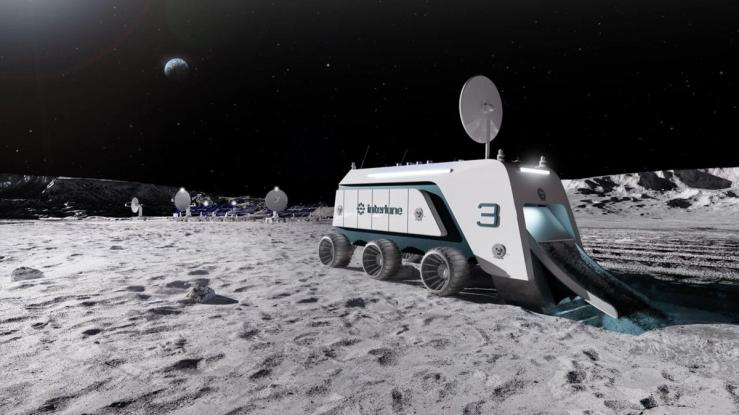The News
From AI to quantum computing, the latest tech breakthroughs share one necessity: The infrastructure around them must be cold. Finding new ways to chill devices and keep them at low temperatures is emerging as a key engineering frontier — and a big business.
One representative plan, from a startup that says it has signed $500 million in contracts: fly rockets to the moon, use robots to capture a rare isotope of helium from moon rocks, and use the gas to cool quantum computers, according to Interlune’s CEO Rob Meyerson.
“The moon is for all of us,” said the former president of the Jeff Bezos space venture Blue Origin. As Russia and big quantum competitor China make moves to develop on the moon and extract lunar resources, “it’s important that we — the West, the US, Interlune — establish a right to operate on the moon.”
AI technologies are growing rapidly, and quantum computers are primed to take off in the coming years, catapulting demand for the components that make them work. Some forms of nuclear fusion, the energy source touted by tech leaders as the future of power, also rely on cooled superconducting magnets. Data-center servers that power AI heat up when processing complex workloads, and that heat can slow them down, or shut them off entirely. The potential of AI to reshape society, as industry leaders are promising, depends in part on these cooling mechanisms, as does the basic function of another red-hot emerging technology, quantum computers.
Quantum computers, which aim to solve much more difficult problems than traditional computers or AI, need to reach near absolute zero — or the lowest possible temperature — for the quantum bits, or qubits, to remain stable and perform calculations. Helium-3 gas, a byproduct of nuclear weapons production, is most commonly used to cool qubits, but it is rare on Earth. Quantum computers need a few dozen liters of helium-3 to run, at $2,500 per liter, according to helium development startup Pulsar Helium — which can cost upwards of $100,000 per device. As tech companies push forward in their initiative to build accurate quantum computers and at scale, demand for the gas will increase, driving companies to find alternative methods to acquire it.
Interlune plans to use its proprietary technology to extract helium-3 on Earth before operations begin on the moon, which Meyerson expects in the early 2030s. It plans to start sending test shuttles next year.
Know More
Some companies are seeking alternatives to helium-3 entirely due to the high price and low supply. PsiQuantum, which builds qubits with photons, still requires extreme cold but doesn’t need to operate as close to absolute zero because its light-based qubits can remain stable at higher temperatures. It uses helium-4, the more common isotope of helium extracted from natural gas deposits.
“We don’t want to go into this temperature regime,” said Dirk Pflueckhahn, vice president of cryogenic facilities at PsiQuantum. “Helium-4 is difficult enough. We don’t want to deal with helium-3.”
Extremely cold temperatures allow for various other scientific experiments, far outside of quantum computing. The SLAC National Accelerator Laboratory, a research center in the Bay Area, also uses the cheaper helium-4 to cool superconducting structures in its particle accelerator. Those ultracold components are then needed to help produce X-ray laser beams that allow it to study matter at the atomic level, which has applications from drug discovery to semiconductor design.
Unlike cooling qubits to remove outside factors and keep them stable, “we use the coldness to crank the power up,” said Matthias Kling, the laser facility’s Director of Science and R&D. Reducing friction, or heat, allows the accelerator to efficiently produce the laser beam.
Data centers, meanwhile, use cooling mechanisms to manage hot servers, although they don’t require such extreme cold or cryogenic agents like helium. Companies have developed various methods of keeping servers cool for optimal performance, from placing them deep underground where the temperature is naturally lower to running cold water through tubes connected to the chips, carrying heat away from the servers. France-based Schneider Electric and American Vertiv are key players in developing liquid cooling systems. While it’s less common, companies also immerse entire servers into liquid that doesn’t conduct electricity, so it won’t short-circuit or corrode the chips.
Notable
- Several other technologies use cooling mechanisms to function better. The sensor system in a massive SLAC-built camera at the Rubin Observatory in Chile is cooled to about -150 degrees Fahrenheit to minimize noise, making for clearer pictures of space.


